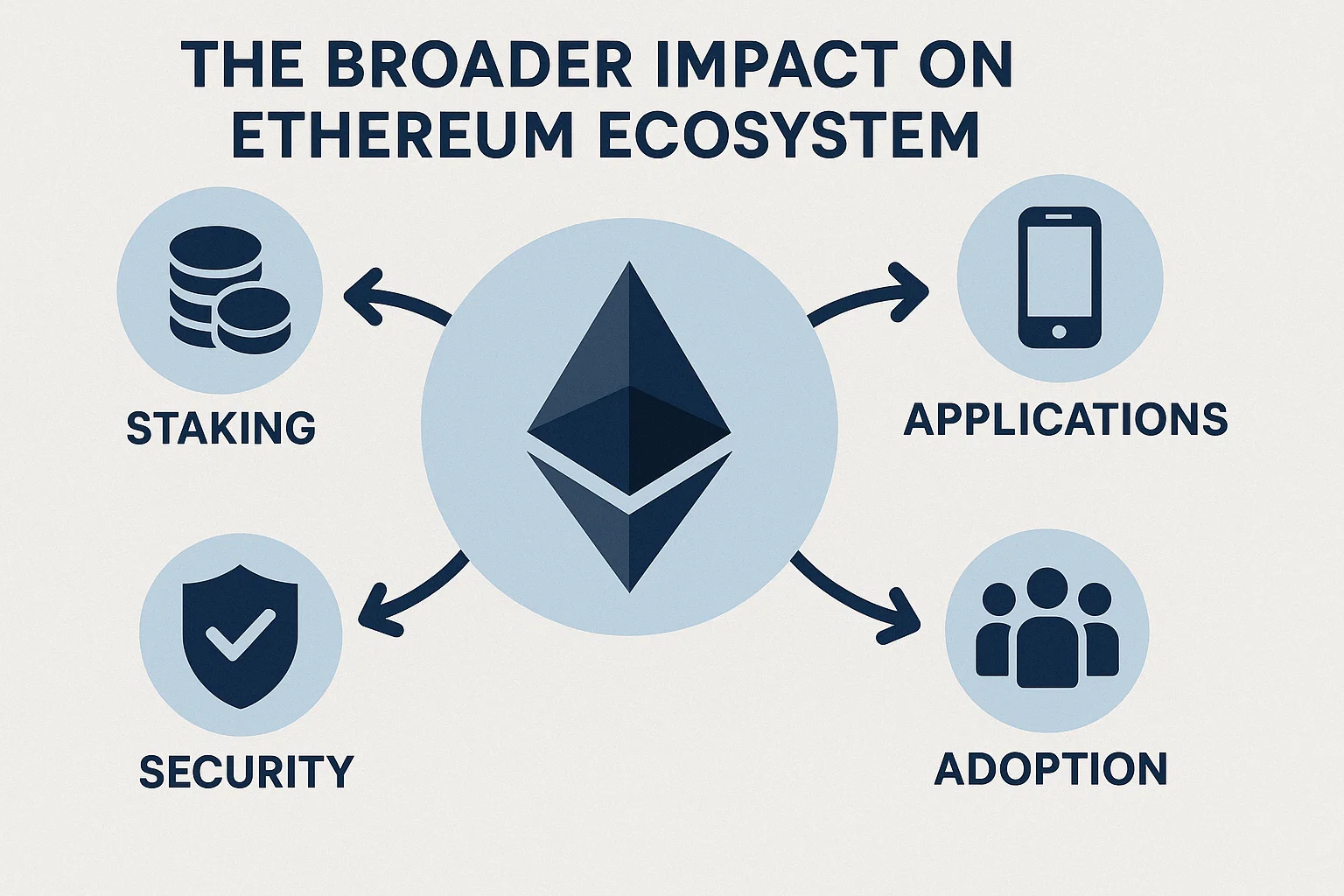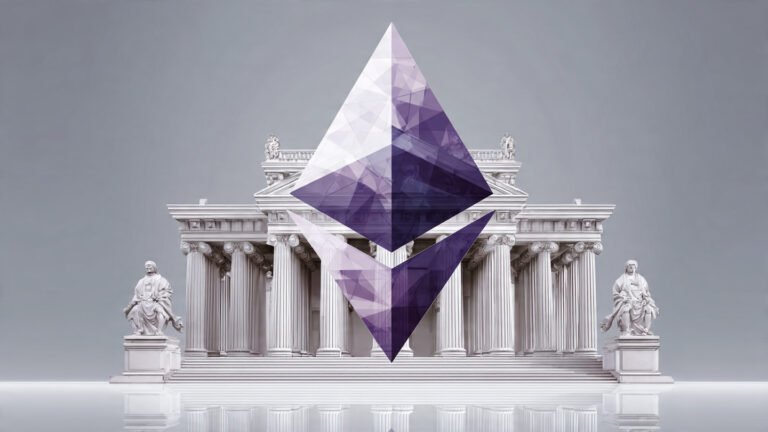Ethereum Protocol Advocacy Alliance is a partnership formed by seven major protocol teams operating on the Ethereum network. These include organizations such as Aave Labs, Aragon, Curve Finance, Lido Labs Foundation, Spark Foundation, The Graph Foundation and Uniswap Foundation. The alliance has been established to serve as a unified voice to protect the decentralized architecture of Ethereum and to steer advocacy efforts in ways that benefit the entire ecosystem rather than individual projects.
At its core, the Alliance is driven by shared principles: safeguarding neutrality of protocol code, promoting on‑chain transparency as a compliance tool, preventing regulatory overreach that impedes innovation, and maintaining global, permissionless access to DeFi infrastructure.
Why the Alliance Matters for Ethereum’s Future
Addressing Regulatory Headwinds
The global regulatory environment for cryptocurrencies and decentralized finance (DeFi) is rapidly evolving—and not always for the better from a decentralization perspective. Governments are increasingly proposing or implementing rules that could force protocol teams or decentralised networks into centralised compliance models (for example, mandating identity KYC at the protocol level). In this context, the formation of the Ethereum Protocol Advocacy Alliance is timely. By banding together, protocol teams can offer a stronger, more coordinated message to policymakers that accurately reflects the technical and architectural realities of a network like Ethereum.
Preserving the Essence of Decentralization
One of the major risks facing Ethereum and other similar networks is that regulatory measures, if poorly crafted, might inadvertently erode decentralization. For instance, if protocols are coerced into centralising governance or custody, the trust model of self‑custody and permissionless access could deteriorate. The Ethereum Protocol Advocacy Alliance directly addresses these risks by advocating for the preservation of decentralised infrastructure—ensuring that users maintain autonomy and developers maintain the freedom to build. According to the announcement, the alliance’s efforts encompass more than $100 billion in on‑chain assets. Enhancing Innovation and Ecosystem Growth
When regulatory uncertainty looms, innovation can stall. By proactively engaging with policy and advocacy, the Ethereum Protocol Advocacy Alliance helps create a more stable environment for development, allowing protocol teams to focus on scalability, interoperability, UX enhancements, and the next wave of Ethereum upgrades. For the broader ecosystem, this means Ethereum’s leadership position in DeFi and Web3 remains stronger—rather than being undermined by rigid or ill‑fitting regulatory regimes.
How the Ethereum Protocol Advocacy Alliance Will Operate
Collaboration Over Confrontation
Rather than positioning itself purely as an adversarial lobby group, the Ethereum Protocol Advocacy Alliance has signalled an approach rooted in collaboration, education, and technical guidance. It plans to engage with existing organisations such as the DeFi Education Fund, the Decentralization Research Center, and the European Crypto Initiative to amplify its advocacy efforts.
Four Guiding Principles
The Alliance has articulated four key principles guiding its strategy:
-
Protecting protocol code from regulatory interference.
-
Leveraging on‑chain data as a compliance and transparency tool rather than forcing external systems.
-
Preventing overly rigid rules that could stifle innovation and protocol development.
-
Ensuring open access to DeFi infrastructure for all, globally and permissionlessly.
Decentralised Structure
Interestingly, the Ethereum Protocol Advocacy Alliance is not structured as a traditional membership organisation with board governance and fixed budgets. Instead, the alliance functions as a flexible coalition: multiple protocol teams working together without a single formal leader, allowing for nimble coordination and alignment across differing project interests.
Focus Areas
The alliance’s work will likely emphasise:
-
Dialogue with regulators and policymakers to explain how Ethereum’s architecture works and the implications of different rules.
-
Providing technical briefings and educational material to ensure policy decisions are grounded in the network’s reality.
-
Coordinating across jurisdictions to reduce fragmentation of regulation and the risk of jurisdictional arbitrage.
-
Supporting the broader ecosystem by amplifying developer voices, ensuring user‑centric outcomes, and defending self‑custody rights and permissionless participation.
The Broader Impact on Ethereum Ecosystem

For Developers and Protocol Teams
For protocol teams, the Ethereum Protocol Advocacy Alliance creates a shared platform for advocacy that can amplify their voices. Instead of each team navigating regulatory headwinds in isolation, they can pool resources, share insights, and align on policy signals. This could accelerate the pace of development and deployment of features—knowing that innovation is being defended at the ecosystem level.
For Users and Self‑Custody Advocates
From the perspective of end‑users and community advocates, the alliance underlines that major Ethereum ecosystem participants remain committed to fundamentals like self‑custody, permissionless access, and decentralised governance. The announcement emphasises that the alliance is grounded in “permissionless access to DeFi infrastructure. This should reassure users who worry that regulatory pressure might erode decentralisation over time.
For Institutional Investors and the Market
For institutional participants, the Ethereum Protocol Advocacy Alliance signals a maturation of the Ethereum ecosystem. It shows that major protocol teams recognise the importance of regulatory engagement alongside technical development. A stable regulatory backdrop can improve institutional confidence, reduce regulatory‑tail risk, and possibly lead to broader adoption of Ethereum infrastructure in the future.
For The Web3 Regulatory Landscape
This alliance may set a precedent for how decentralised protocol teams engage with policy. Rather than being reactive or merely responding to enforcement, they are proactively shaping the narrative and ensuring that regulations reflect the real nature of decentralized protocols. This may help avoid ill‑fitting regulation that could harm innovation, degrade security, or concentrate power.
Challenges and Considerations Ahead
While the announcement of the Ethereum Protocol Advocacy Alliance is a positive signal, several challenges remain:
Diverse Interests and Coordination
Seven major protocol teams are collaborating—but they do not always share identical priorities. Balancing the different governance, business models, and development trajectories of each ecosystem participant will require strong coordination. Ensuring the alliance remains united and effective over time may require clear agreement on strategy and support mechanisms.
Varied Jurisdictions and Regulatory Approaches
Regulation of crypto and DeFi is happening at different speeds and in varied ways globally. The alliance will need to adapt to very different legal landscapes—what works in one country may not transfer neatly to another. Aligning on policy positions that can scale across jurisdictions without diluting principles is a delicate task.
Ensuring Technical Realism in Policy Discussions
While the alliance aims to educate regulators, there is always a risk that policy outcomes simplify or mischaracterise technical realities. The Ethereum Protocol Advocacy Alliance must ensure it remains technically credible, transparent, and aligned with the evolving fundamentals of the ecosystem to maintain trust with both regulators and the community.
Maintaining Independence and Decentralisation
Ironically, as these protocol teams coordinate, they must avoid concentrating power or drifting away from decentralised governance models. The very act of alliance formation must not compromise the core principle of decentralisation. The alliance must guard against becoming overly institutionalised in a way that undermines its foundational values.
Where Does This Fit in Ethereum’s Roadmap?
The formation of the Ethereum Protocol Advocacy Alliance comes at a strategically important time for Ethereum. As the network continues to evolve—through upgrades such as Dencun upgrade (expected on the roadmap), improvements in scalability (e.g., roll‑ups, sharding), and further growth in institutional adoption—the regulatory dimension becomes more material. The alliance’s work complements these technical advancements by helping ensure that policy frameworks do not become bottlenecks for innovation. For instance, the alliance’s emphasis on protecting decentralised infrastructure that secures over $100 billion in on‑chain assets speaks to the economic scale of what’s at stake.
Implications for the Future of Decentralized Finance

Reinforcing DeFi’s Permissionless Nature
With the alliance working to safeguard open access and permissionless participation, DeFi protocols on Ethereum have a stronger basis for resisting centralising regulatory pressure that could layer intermediaries or custodial mandates. This will help maintain the user‑centric model of DeFi—where users remain in control, rather than being forced into intermediated structures.
Guarding Against Fragmentation
One risk in a heavily regulated environment is fragmentation—different rules in each jurisdiction, forks of protocols, or migration to less‑regulated chains. The Ethereum Protocol Advocacy Alliance’s global coordination may reduce fragmentation risks by providing a unified stance and mechanism for cross‑jurisdictional advocacy.
Evolving Governance Models
As DeFi matures, the governance of protocols is evolving (token governance, DAO structures, off‑chain coordination). The alliance may accelerate the adoption of governance models that are more resilient, transparent, and decentralised—forcing the ecosystem to remain ahead of regulatory scrutiny rather than behind it.
Supporting Institutional Engagement
Institutional players often demand regulatory clarity and governance accountability. By engaging proactively with policy, the alliance may pave the way for greater institutional participation in DeFi on Ethereum—without compromising the decentralised foundations. A more mature regulatory backdrop could unlock new capital, infrastructure services, and applications.
Final Thoughts
The formation of the Ethereum Protocol Advocacy Alliance marks a significant moment for the Ethereum ecosystem. It signals that decentralization is not just an abstract ideal but a defendable architectural principle—backed by major players willing to coordinate, educate, and advocate. For anyone invested in the future of Ethereum, DeFi, self‑custody, and Web3 innovation, the alliance is a welcome development that strengthens the ecosystem’s resilience and prospects.
If you’re a developer building on Ethereum, or a community member advocating for self‑custody and permissionless access, now is the time to engage: follow the alliance’s updates, consider how your project aligns with the principles of neutrality, transparency and open access, and participate in shaping the narrative.
FAQ
Q : Which teams are part of the Ethereum Protocol Advocacy Alliance?
The alliance includes major protocol teams on Ethereum: Aave Labs, Aragon, Curve Finance, Lido Labs Foundation, Spark Foundation, The Graph Foundation, and Uniswap Foundation.
Q : Why was the alliance created?
It was formed to collectively respond to regulatory pressures, to protect the decentralised nature of Ethereum infrastructure, and to shape public policy in a way that aligns with the network’s technical architecture and values.
Q: How is the alliance different from a typical crypto lobbying group?
Rather than traditional lobbying, the alliance emphasizes education, technical collaboration, and working with existing advocacy organisations rather than setting up an entirely separate structure. The goal is to ensure that regulation is informed by the realities of on‑chain architecture, neutrality, and decentralisation
Q: What are the immediate actions the alliance will take?
The alliance will engage with policymakers, provide technical briefings on how Ethereum’s ecosystem operates, support globally coordinated advocacy, ensure regulatory frameworks incorporate on‑chain data capabilities, and defend open, permissionless access for all participants.
Q: How does this affect regular Ethereum users or developers?
For users, it means a stronger guarantee that self‑custody, open access, and decentralised governance remain protected. For developers and protocol teams, it offers a more stable environment for innovation by reducing regulatory tail‑risk and ensuring that future policies recognise technical realities.


